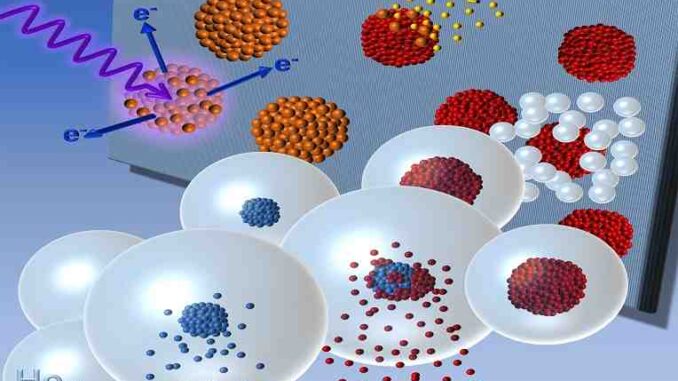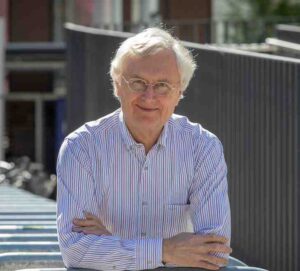
Views: 2
– Core-shell clusters pave the way for new efficient nanomaterials that make catalysts, magnetic and laser sensors or measuring devices to detect electromagnetic radiation more efficient.
Courtesy TU Graz by Christoph Pelzl: Whether in innovative high-tech materials, more powerful computer chips, pharmaceutical products or in the field of renewable energies, nanoparticles, the smallest portions of bulk material, form the basis for a wide range of new technological developments.
Due to the laws of quantum mechanics, these particles measuring just a few millionths of a millimeter can behave completely differently in terms of conductivity, optics or robustness than the same material on a macroscopic scale.
In addition, nanoparticles or nanoclusters have a very large catalytically effective surface area compared to their volume. For many applications, this allows material savings while maintaining the same performance.
Further development of high-level research in Graz in the field of nanomaterials

Researchers at the Institute of Experimental Physics (IEP) at the University of Technology in Graz have developed a method for assembling nanomaterials as desired. They allow droplets of superfluid helium with an internal temperature of 0.4 Kelvin (that is, minus 273 degrees Celsius) to fly through a vacuum chamber and selectively introduce individual atoms or molecules into these droplets.
“There, they clump together in a new aggregate and can be deposited on different substrates”, explains experimental physicist Wolfgang Ernst, from TU Graz. He has been working on this so-called helium droplet synthesis for 25 years, developed successively even more during this time, and has been producing continuous research at the highest international level, mainly carried out in the “Cluster Lab 3”, which was created specifically for this purpose in the IEP .
Reinforcement of catalytic properties

In Nano Research, Ernst and his team now report the targeted formation of so-called core-shell clusters using helium droplet synthesis. The clusters have a 3-nanometer silver core and a 1.5-nanometer thick zinc oxide layer.
Zinc oxide is a semiconductor used, for example, in radiation detectors to measure electromagnetic radiation or in photocatalysts to decompose organic pollutants. The special thing about the combination of materials is that the silver core provides plasmonic resonance, that is, it absorbs light and therefore causes a great amplification of the light field.
This puts electrons in an excited state in the surrounding zinc oxide, forming electron-hole pairs – small amounts of energy that can be used elsewhere for chemical reactions, such as catalysis processes directly on the cluster’s surface.
“The combination of the two properties of the material greatly increases the efficiency of photocatalysts. In addition, it would be conceivable to use such material in the separation of water for the production of hydrogen”, says Ernst, citing an application field.
Nanoparticles for laser and magnetic sensors
In addition to the silver-zinc oxide combination, the researchers produced other interesting core-shell clusters with a magnetic core of the elements iron, cobalt or nickel and a gold shell.
Gold also has a plasmonic effect and also protects the magnetic core from unwanted oxidation. These nanoclusters can be influenced and controlled by both lasers and external magnetic fields and are suitable for sensor technologies, for example.
For these material combinations, temperature-dependent stability measurements as well as theoretical calculations were carried out in collaboration with the IEP theory group led by Andreas Hauser and the team of Maria Pilar de Lara Castells (Fundamental Physics Institute of the National Research Council Spanish CSIC, Madrid) and can explain the behavior in phase transitions, such as the formation of alloys that deviate from samples of macroscopic material.
The results were published in the Journal of Physical Chemistry. Ernst now hopes that the findings from the experiments will be quickly transferred to new catalysts “as soon as possible”.
Related article: Nanotubes: new approach to making airplane light parts
nanoparticles